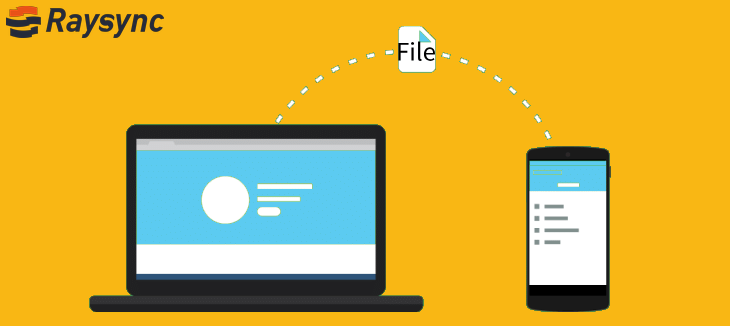File Transfer in Healthcare Big Data: Navigating Challenges with Raysync
The modern healthcare industry is increasingly reliant on seamless, secure data exchange. With the rise of digitization, efficient transfer of documents within the healthcare industry has become critical to facilitate diagnosis, treatment and patient care. Implementing efficient healthcare industry file transfer practices not only streamlines operations, but also protects sensitive patient information. In this paper, we will explore specific application scenarios and best practices for file transfer in the healthcare industry, understand the pain points of file transfer for the medical industry, highlight the importance of secure data transfer and introduce the appropriate tools.
In healthcare, large-scale file transfer approaches need to be more comprehensive, including careful pre-planning, rigorous testing and continuous monitoring during data transfer. Before initiating any file transfer for the medical industry, healthcare organizations develop a structured plan that specifies the types of data to be transferred, identifies key stakeholders, and establishes data transfer protocols. Rigorous testing of these processes ensures smooth and error-free file transfers and minimizes the risk of data loss or corruption.
Application Areas for File Transfer in the Healthcare Industry
Healthcare industry file transfer plays a pivotal role in various facets of the healthcare industry, enhancing efficiency and collaboration. Specific application areas include:
Medical Imaging: Transmitting large medical imaging files, such as MRIs and CT scans, between healthcare facilities for accurate diagnostics and consultations.
Telemedicine: Facilitating the exchange of patient data and medical records between healthcare providers in real-time, enabling remote consultations and telemedicine services.
Clinical Trials: Efficiently sharing and managing large datasets related to clinical trials among research institutions, ensuring streamlined collaboration and data integrity.
Electronic Health Records (EHRs): Securely transferring electronic health records between healthcare systems to provide comprehensive and up-to-date patient information.
Research and Development: Enabling the exchange of extensive datasets for medical research and development, fostering collaboration among scientists and researchers globally.
Challenges of File Transfer in Healthcare Industry
The healthcare industry's transition to digital processes has brought about a plethora of advantages, but it hasn't been without its fair share of challenges, particularly in the domain of file transfer. The intricate nature of healthcare data, coupled with the ever-increasing volume and sensitivity of information, has given rise to several critical challenges.
-
Data Security Issues: A hospital needs to share patient records securely with a specialized clinic for a consultation. The challenge lies in ensuring that the sensitive information is encrypted during transfer, protecting patient privacy and complying with healthcare data protection laws.
-
Large Volume of Data and Inefficient Transfer: A diagnostic imaging center routinely transfers large files of high-resolution medical images for remote assessments. However, the volume of data often leads to sluggish transfer speeds, delaying crucial diagnoses.
-
Legal Compliance Issues: A healthcare institution participating in a multi-center clinical trial needs to share research data securely. However, ensuring compliance with diverse international and regional data protection laws becomes a complex challenge.
-
Management and Maintenance of Cloud Storage: A healthcare network utilizes cloud storage for efficient data management. However, with the increasing volume of patient records, managing and maintaining the cloud storage infrastructure becomes a logistical challenge.
-
Poor Fault Tolerance: During the transfer of surgical planning files between healthcare facilities, a system failure results in data loss, compromising critical surgical procedures.
Efficient File Transfer Software - Raysync
In response to the challenges faced by the healthcare industry, advanced file transfer solutions, like Raysync, have emerged as a game-changer. Raysync addresses critical aspects of file transfer in healthcare:
-
Accelerated File Transfer: Raysync employs cutting-edge protocols and optimization techniques to significantly speed up the transfer of large files, ensuring timely access to critical medical data.The transfer speed of the Raysync protocol is 100 times faster than that of FTP/HTTP, and thousands of files could be transferred simultaneously.
-
Enhanced Data Security: Raysync uses AES-256 bank standard encryption technology and TLS data transmission encryption, supports resumed transmission, retransmission, and multiple file verification (Hash, Rsync verification) to ensure the integrity and security of medical data transmission.
-
Scalability and Flexibility: Raysync supports secure data sync and backup across networks, platforms (Windows, MacOS, Linux), devices, and storage (local storage, cloud storage, NAS, SMB, etc.).This storage method is also one of the reasons why Raysync is conducive to data security.
-
Centralized Management: Raysync’ managed file transfer solutions to manage global transfer nodes from one single portal consisting of task manager, dashboard, topological graph, logs, and real-time notifications. It provides a centralized management interface, simplifying the administration of file transfer processes in the complex healthcare ecosystem.
Conclusion
In conclusion, the challenges associated with file transfer in the healthcare industry are nuanced and multifaceted. However, with the advent of advanced solutions like Raysync, healthcare providers can overcome these challenges, ensuring efficient, secure, and compliant file transfers. As the healthcare industry continues its digital evolution, the adoption of innovative file transfer technologies becomes not only a necessity but a strategic imperative for delivering quality patient care and advancing medical research. Embracing solutions like Raysync is the key to unlocking the full potential of Healthcare Big Data.
You might also like

Raysync News
July 21, 2020[2022] Top 7 Best Large File Transfer Tools
Large file transfer tools come to help manage the internal operations of enterprises and facilitate communication among the enterprises and employees. Here are top 7 best Large File Transfer Tools.

Raysync News
June 18, 2020What is File Transfer?
File transfer is the transmission of a computer file through a communication channel from one computer system to another.

Raysync News
May 8, 2020Still Using FTP, No Wonder There Is No Response in File Transfer
Raysync Transmission can easily transfer TB-level bulk of large files at full line speed, hundreds of times faster than FTP